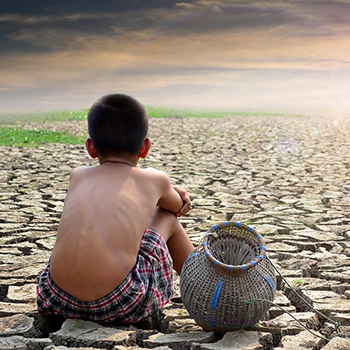Shopping Cart (0)
Your cart is currently empty.
TRIPLET30: 30% off on purchase of 3 books
Your cart is currently empty.

The Swiss Alps are melting faster than the Himalayan ranges. When the glaciers in Uttarakhand melted, it resulted in flooding, destruction of nature and lives. Climate change is an inevitable phenomenon. Every country is concerned about it. Over the last century, the average air temperatures near the earth’s surface have gone up by about 2 degrees Fahrenheit. It doesn’t seem like much. Why does it matter? This small change can have huge impacts on plants and animals.
School education systems around the world are dwelling on how the curriculum can include activities across many subjects that sensitize kids on this important topic.
How Does Climate Change Affect Children?

Children have a direct bearing on the burdens imposed by climate change. If the world continues to produce the same amount of carbon emissions, a baby born today might be living with an average temperature 7.2 degrees Fahrenheit warmer by their 71st birthday, the Lancet report highlights.
Adverse childhood events (ACEs): Disasters lead to adverse health outcomes through toxic stress which includes earlier death and higher rates of cancer. Exposure to higher-than-average temperatures affects a child’s learning ability.
Exploitation and Displacement: Climate-related displacement brings increased vulnerability including partition from family, exploitation and abuse. Studies suggest when a family is faced with economic hardships caused by changes in climate, the risk of child marriage can increase.
Impacts of Air Pollution: A major contributor to climate change, air pollution is a major contributing factor in the deaths of 6,00,000 (approx.) children under the age of 5 every year.
What Can I As A Parent Do?
We can sensitize kids on the impact of climate change and ensure they take small steps every day that will make a tiny yet significant difference in the long run. Here are some thoughts on teaching children about the impact of global warming:
1. Storybooks: Read storybooks and novels that talk about this important subject. For example, The Climate Ninja, a personalized story (where you can personalize the name, avatar, and story) talks about an alien, Rumpus, that takes refuge on Earth after his planet Mootza is destroyed. The conversation between Rumpus and the protagonist is portrayed in a manner where the child doesn’t think of it as a social science lesson.
2. Movies: Animated movies such as Ice Age: The Meltdown and Happy Feet Two are an excellent start to introduce the concept of global warming to young kids. For older kids, docs such as An Inconvenient Truth and The 11th Hour may inspire them to do their bit in preserving the planet.

3. Personal Experiences: Talk about your personal experiences as a child. What was the weather like when you were growing up in the 70’s and 80’s. Did it rain during summer? Did you actually require an air conditioner?
4. Conserve energy in everyday life: Teach your child simple techniques to conserve energy
Children constitute majority of the population in many countries and have the power to transform our societies towards a low-carbon and climate-resilient future. Hence it is crucial to strengthen both formal and informal education on climate change.
Let us know your thoughts! If you like the article or have a question or a suggestion, do leave a comment below. View our complete catalog of books here.
You have no items in wishlist.
We will send you an email to reset your password.
| Title |
|---|
| Price |
| Add to cart |
| Type |
| Vendor |
